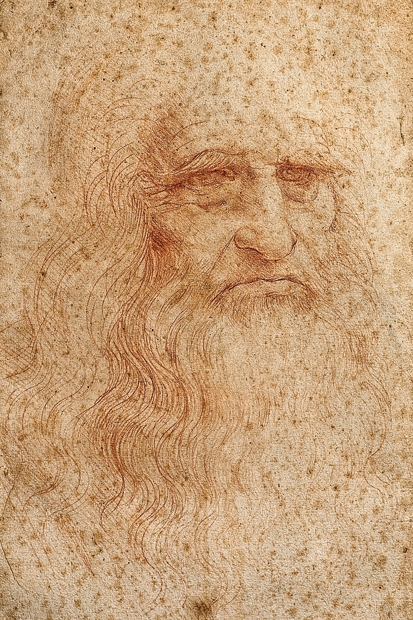To most non-Italians Turin spells Fabbrica Italiana Automobili Torino (Fiat). But this subalpine city has a longer history than the internal combustion engine. It may be twinned with Detroit, but its cavalcade of equestrian monuments testifies to an older sort of horsepower — the sort harnessed by the condottieri of the House of Savoy to turn their little Duchy into a major player on the European stage and, for four brief years from 1861 to 1865, into the capital of the Kingdom of Italy.
So while Detroit has the Detroit Institute of Arts, Turin has 55,000 sqm of royal museums, currently undergoing unification into a single complex called the ‘Polo Reale’. When the 3km circuit is completed in December, it will house the vast and rambling collections — artistic, bibliophile, military and archeological — amassed by the Savoys over three centuries of fighting and politica matrimoniale.
The motor behind it is the Consulta, an association founded 27 years ago to protect the city’s cultural heritage through a unique model of corporate sponsorship. Each of its 33 member companies, ranging in size from international corporations such as Fiat, Martini and Ferrero to local machine-components manufacturer Megadyne, makes a fixed annual contribution of €26,000 to a communal kitty and has an equal vote on how it’s spent. The Polo Reale is the Consulta’s new baby.
From 4 December a single ticket will admit visitors to the newly reopened Galleria Sabauda, the Archeological Museum, the Royal Armoury, the Royal Library and the 400 rooms, in seasonal rotation, of the Royal Palace. Don’t be deceived by the palace’s understated Piedmontese baroque exterior. What the Savoys saved on external embellishments they splashed out on sumptuous interiors covered in acres of frescoes and lashings of gold leaf and connected by ludicrously elaborate staircases. The most famous of them is Juvarra’s Scala delle Forbici (opposite), a gravity-defying switchback flight of fancy leading up to the second-floor apartments. The ‘forbici’ refer to the scissor emblem cheekily stuccoed on to the ceiling by its architect. He invited doubters of his ability to squeeze a staircase into such a small space to cut off their tongues.

From the piano nobile, a small door in the Gabinetto Cinese — an oriental lacquer-panelled chamber also designed by Juvarra — opens on to the breathtaking prospect of the Royal Armoury (opposite), offering viewers a canter through the history of human weaponry from prehistoric axe-heads and Etruscan helmets to Swiss crossbows, German gold- and ivory-inlaid arquebuses (portable long-barrelled guns), and a set of perfectly useless tortoiseshell arms presented to Umberto I by Ismail Pasha of Egypt. The extraordinarily lifelike troop of splendidly armoured horses standing guard over the gallery is made of wood upholstered in horsehide, with one exception: a white charger, Favorito, belonging to King Carlo Alberto, stuffed and repatriated after his master’s death in exile.
The Consulta has converted two vaults in the former cellars into microclimatically controlled galleries for the display of precious works on paper. The most precious are the dozen Leonardo drawings from the collection of 2,000 masterworks cleverly bought from the engraver Giovanni Volpato by Carlo Alberto, who bargained their owner down from 70 to 50 million lire, then took eight years to pay.
From 30 October, Leonardo’s drawings, including the famous sage-like self-portrait and the drawing for the head of the angel in the Louvre’s ‘Virgin of the Rocks’ (opposite), will go on permanent display in the Sala Leonardo, while drawings by other masters in the collection — including Raphael’s ‘Study of a Youth Playing the Lute’ — will be shown in the second vault. In December, with the reopening of the Galleria Sabauda, the Savoy paintings will go back on view. As well as works by Duccio, Fra Angelico, Mantegna, the Pollaiuolos, Filippino Lippi, Veronese and Orazio Gentileschi, the collection includes Netherlandish paintings by Van der Weyden, Van Eyck, Memling, Rembrandt, Brueghel and Rubens — among them a charming portrait by Van Dyck of the three children of Charles I and Henrietta Maria, sent by the English Queen to her sister Christine of Savoy.

The Turinese, who are immensely proud of their culture, claim many inventions. These include the grissino, the aperitivo, the choc-ice on a stick — the original Pinguino di Pepino is still sold in Pepino’s gelateria on Piazza Carignano — and, indirectly, the patriotic red, white and green pizza Margherita created in honour of Margherita of Savoy, wife of Umberto I, by the Neapolitan chef Raffaele Esposito in 1889. They also claim credit for the first theme park — Turin’s Borgo Medievale dates back to 1884 — and, in the Fiat Topolino, the first modern mini car. Last but not least, they can claim to have invented Italy when Carlo Alberto announced the First Italian War of Independence from the loggia of the Royal Armoury in 1848.
Now they have come up with the Consulta. By an odd coincidence, three American car manufacturers recently pledged $26 million to save the Van Gogh self-portrait in the Detroit Institute of Arts from seizure by the bankrupt city’s creditors. In Turin, meanwhile, the more modest sums of €26,000 contributed annually by the Consulta’s 33 members are keeping the city’s artistic heritage ticking over nicely. The Italian car industry may be in decline, but the Leonardo self-portrait is safe in its vault.





Comments